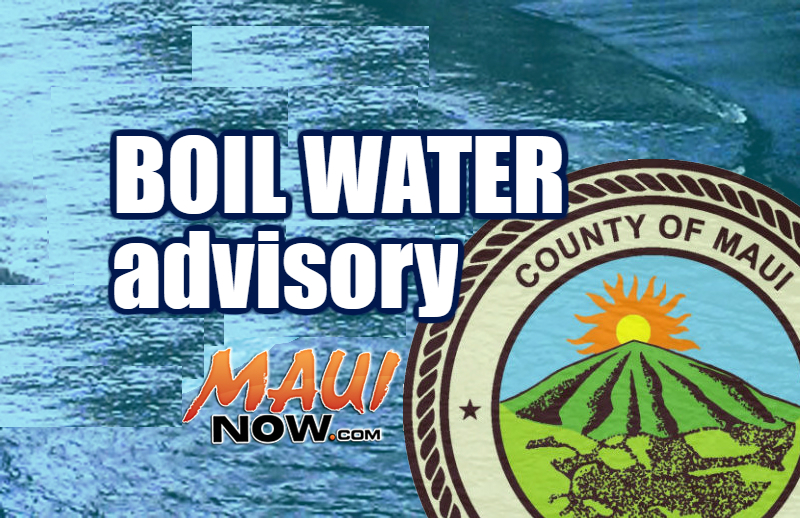PFAS In Tap Water: Nearly 100 Million Americans Affected, Study Finds

Table of Contents
The Extent of PFAS Contamination in US Drinking Water
Understanding the scale of PFAS contamination is crucial. Studies, employing various methodologies such as analyzing water samples from municipal water supplies and private wells across different regions, have revealed a widespread problem. The geographical distribution of PFAS contamination is not uniform; some states are significantly more affected than others.
- PFAS Hotspots: Certain areas, particularly those with a history of industrial activity or proximity to military bases (where firefighting foam containing PFAS was used), show extremely high levels of PFAS in their water supply. For example, some communities in Michigan, West Virginia, and North Carolina have reported alarmingly high concentrations of PFAS in their drinking water.
- Water Contamination Map: Creating a comprehensive map illustrating PFAS levels across the country is essential for public awareness and targeted remediation efforts. While comprehensive nationwide data is still being collected, state-level data and EPA resources offer insights into local contamination levels.
- Regional Variations: The concentration of PFAS varies considerably across regions, highlighting the need for localized testing and targeted solutions. Some areas may have naturally occurring low levels, while others face severe contamination requiring immediate action.
- Percentage of Affected Americans: Estimates suggest a substantial portion of the US population may be exposed to unsafe levels of PFAS through their tap water, underlining the severity of this public health concern.
Health Risks Associated with PFAS Exposure
The long-term health effects of PFAS exposure are a serious concern. Studies have linked PFAS exposure to a range of adverse health outcomes, including:
- Cancer: Increased risk of kidney and liver cancer.
- Thyroid Disorders: Disruptions to thyroid function.
- Immune System Deficiencies: Weakened immune response, making individuals more susceptible to infections.
- Developmental Issues in Children: Lower birth weight, impaired immune function, and developmental delays.
It's important to note that research is ongoing, and the full extent of PFAS's impact on human health is still being investigated. However, the existing evidence is concerning enough to warrant proactive measures to reduce exposure.
Sources of PFAS Contamination
PFAS contamination stems from various sources, many of which are linked to industrial activities and past practices:
- Industrial Discharges: Manufacturing facilities that produce or use PFAS have historically discharged these chemicals into the environment, contaminating soil and water sources.
- Firefighting Foam: Aqueous film-forming foam (AFFF), used at military bases and airports, contains PFAS that can leach into groundwater. This is a significant source of widespread contamination.
- Non-Stick Cookware: Certain non-stick cookware and food packaging materials contain PFAS, which can leach into food and subsequently contaminate water through improper disposal.
- Environmental Persistence: The “forever chemical” nature of PFAS poses a significant challenge. They are incredibly persistent in the environment, resistant to degradation, and can remain in the soil and water for decades, leading to long-term contamination.
- Legacy Contamination: Past practices have left behind a legacy of PFAS contamination, requiring extensive and costly remediation efforts to clean up affected areas.
What You Can Do to Protect Yourself from PFAS in Tap Water
While eliminating PFAS from the environment requires large-scale efforts, individuals can take steps to reduce their personal exposure:
- Water Filters: Investing in a high-quality water filter, such as an activated carbon filter specifically designed to remove PFAS, is crucial. Consider a whole-house filtration system for comprehensive protection.
- Bottled Water: While not a long-term sustainable solution, bottled water can provide a temporary alternative if your tap water is highly contaminated. Choose reputable brands with rigorous quality control.
- Water Quality Report: Request a water quality report from your local water authority to ascertain the PFAS levels in your water supply. Many states and municipalities provide this information online.
- Advocacy: Contact your local water authorities and elected officials to advocate for stricter regulations, improved water treatment infrastructure, and increased funding for PFAS remediation.
Taking Action Against PFAS in Your Tap Water
The prevalence of PFAS contamination in US tap water is a significant public health concern affecting millions. The potential health risks associated with long-term exposure, ranging from immune system deficiencies to cancer, necessitate immediate action. Reducing PFAS exposure requires a multi-pronged approach involving individual actions, such as investing in PFAS water filters and advocating for cleaner water, as well as larger-scale efforts focused on stricter regulations and effective remediation strategies. Learn more about PFAS in your water, consider PFAS testing, and contact your local representatives to advocate for stricter regulations and improved water quality – your health depends on it.

Featured Posts
-
 Erfolgreiche Schlichtung Bei Der Bvg Kein Osterstreik
May 16, 2025
Erfolgreiche Schlichtung Bei Der Bvg Kein Osterstreik
May 16, 2025 -
 Nike Q3 Results Jefferies Predicts Impact On Foot Lockers Near Term Performance
May 16, 2025
Nike Q3 Results Jefferies Predicts Impact On Foot Lockers Near Term Performance
May 16, 2025 -
 Urgent Kdhe Boil Water Advisory For Anderson County Rural Water District 4
May 16, 2025
Urgent Kdhe Boil Water Advisory For Anderson County Rural Water District 4
May 16, 2025 -
 Amber Heards Twins The Elon Musk Fatherhood Controversy Explained
May 16, 2025
Amber Heards Twins The Elon Musk Fatherhood Controversy Explained
May 16, 2025 -
 The Rise Of The Apple Watch How Nhl Referees Are Leveraging Technology
May 16, 2025
The Rise Of The Apple Watch How Nhl Referees Are Leveraging Technology
May 16, 2025
